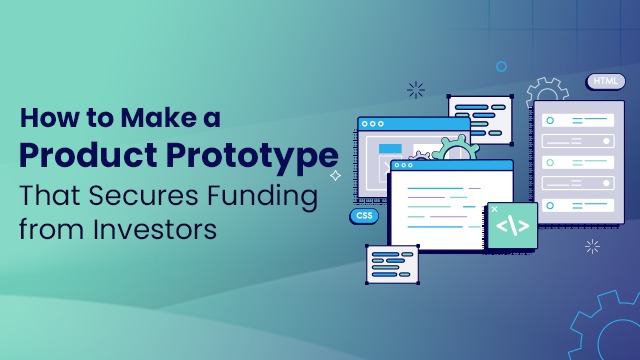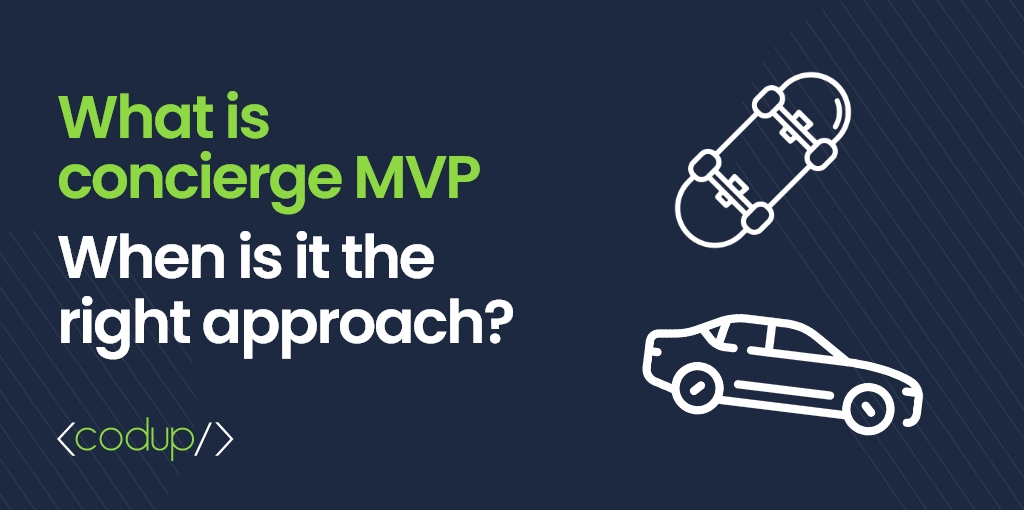How to Make a Product Prototype That Secures Funding from Investors

This is the turning moment. You’ve conceptualized a revolutionary product idea and are committed to turning it into a reality. But, the challenge here lies in persuading a potential investor and convincing them that your vision isn’t just an instance fanciful dream but a compelling opportunity worth their funding.
The solution? A well-crafted prototype
Let’s look into this fast-paced world of software startups, where innovation is the currency of success, having a brilliant idea is just the beginning. Transforming that idea into a tangible, market-ready product requires a prototype. Prototypes serve as the bridge between imagination and realities, allowing you to visualize your idea, test the concept, and most importantly attract investors and secure funding.
Hold on, as we are going to provide you with this guide, and take you through the essential steps to create a product prototype that not only wows your target audience but also secures the funding you need to bring your vision to life.
What is a Product prototype and why it is important in the software startup industry?
Let’s begin by explaining what we mean by the product prototype. A Product prototype specifically refers to a prototype created to represent a software or physical product that a company intends to develop and bring to the market. In a more focused term prototypes are essential elements of the design process and when it comes to a product’s production and success, they basically serve as a green light.
Product prototypes are indispensable in the software startup industry, offering a multitude of benefits, from securing investment to refining your concept, marketing your product, and facilitating the development process. They are an invaluable tool in the journey from idea to successful software product.
Fundamental principles to create a Product Prototype that secures funding from investors
1. Defining Your Idea and Conceptualization
Imagine building a house without a blueprint or baking a cake without a recipe. It might end up being a chaotic mess, right? The same principle applies when creating a product prototype. It all begins with a crystal-clear understanding of your idea and its purpose.
Begin by articulating your product idea with clarity. This is the moment to paint a vivid picture in the minds of your readers. Imagine you’re explaining your concept to a friend who knows nothing about it. Use simple language and avoid jargon, ensuring that anyone can grasp the essence of your idea. Investors are more likely to support a product when they understand the problem it addresses. Explain the problem your product addresses in detail and encourage brainstorming sessions to refine your concept. Starting with the bigger picture can lead to more investor support and a successful product.
2. Market Research and Identifying Target Audience
This phase is where your idea meets the real world, and understanding your potential customers becomes paramount.
Who is your product for? Recognizing your target audience thoroughly is important. Investors want to see that you have completed your homework. Consider their wants, preferences, and pain spots. This understanding will not only shape your prototype but also attract investors who see the potential for a substantial return on their investment.
Remember, market research is the compass that guides your product development journey. It isn’t a one-time effort; it’s an ongoing process that can shape your product development journey.
3. Identifying Key Features and Functionality
What will your product actually do? This is where the magic happens. Start envisioning the features and functionality your product will offer. However, don’t get carried away with a laundry list of features. Focus on the core functionalities of prototype that directly address the problem you’re solving. Less can be more when it comes to early prototypes.
Remember, not all features are created equal. Prioritize core features that align with your startup’s unique value proposition. Consider factors like complexity and relevance when selecting features. This ensures that your prototype focuses on what truly matters to your users and investors.
4. Choosing the Right Prototype Type
Selecting the appropriate prototype type is a pivotal decision on your path to securing investor funding. There are various types of prototypes: low-fidelity, high-fidelity, interactive, static, and more.
Let’s delve into the scenarios where each prototype type shines:
- Low-Fidelity Prototypes: Ideal for early-stage concepts, these provide a basic visual representation without intricate details. They are cost-effective and excellent for initial idea validation.
- High-Fidelity Prototypes: These are more detailed and closer to the final product. They’re suitable for showcasing design aesthetics and user interactions, making them valuable for investor presentations.
- Interactive Prototypes: Perfect for simulating user experiences and testing functionality. These prototypes help refine user interactions and are excellent for usability testing.
- Static Prototypes: These are static representations without interactive elements. They are useful for showcasing visual design and layout concepts.
These types offer guidance to founders to select the right prototype type for their specific project that aligns with their project’s stage and goals.
5. Designing the Prototype
Designing a digital product might sound like magic, but it’s more like a carefully crafted recipe. Designers take abstract ideas and turn them into visuals that tell the story of your product.
Begin by demystifying the design process. Explain how designers take abstract concepts and transform them into visual representations that convey the essence of the product. Illustrate the journey from sketches and wireframes to fully realized designs, emphasizing how each step contributes to the prototype’s development.
Here is a secret sauce: Emphasize user-centric design principles to enhance user engagement and provide insights into the resources and the right tools such as Sketch, Figma, Adobe XD, or InVision available for designing prototypes efficiently.
6. Developing the Prototype
Now, let’s discuss the development phase. This is where your prototype goes from being just a visual picture to something you can actually click, tap, and interact with. It’s like turning a blueprint into a real building step by step. Start by detailing the steps involving translating visual elements into functional components, creating user interfaces, and connecting prototype parts for user interaction.
During the developing phase, coding and programming also play a crucial role in bringing your prototype to life. Coding is what makes everything run smoothly. It is a must to remember when developing a prototype that an iterative development approach ensures that your prototype continually improves and refines until it’s just right.
7. User Testing and Feedback
A realistic prototype is an excellent approach to getting feedback and recommendations from both potential clients and investors. User testing serves as a magnifying glass, revealing usability issues and areas for improvement. Pay attention to user testing and feedback as they are invaluable components in the journey of product prototypes.
Thoroughly conduct effective user testing sessions, set clear objectives, select a diverse user group, create realistic scenarios, gather both qualitative and quantitative data, iterate based on feedback, and document and share insights. This will help ensure the prototype meets user needs and demonstrates commitment to user-centered design, ensuring a smooth and effective process.
8. Showcasing to Stakeholders and Investors
The prototype is like your product’s show-and-tell moment. It proves your idea can work, helps manage risks, opens doors to potential partnerships, and shows how far you’ve come. It’s like saying, “Look, its real!” to potential backers.
Now, when you’re ready to show off your prototype to folks like investors or important stakeholders, remember these tricks: Tell a cool story about your product, use pictures and demos to make it crystal clear, let people play with it, share stories from folks who’ve tested it, and be ready to chat about it. By doing all this, you’ll show how your product is a game-changer, fits right into the market, and makes life better for users. That’s what gets investors and big players interested.
Final thoughts
In the dynamic world of digital software startups, a well-crafted prototype serves as the cornerstone of success. It’s not just a step in the process; it’s a game-changer that can make or break your journey.
So, to all you founders out there, don’t just dabble in prototyping—embrace it! Prototyping isn’t just about creating a pretty picture; it’s about understanding your users, solving their problems, and fine-tuning your product until it’s a perfect fit.
The magic of a well-crafted prototype doesn’t stop there. It makes your users happy because it solves their problems. It makes investors confident because you’ve done your homework. Ultimately, it paves the way for a successful product.
So, don’t view prototyping as a hurdle; see it as your springboard to success. Invest time, effort, and creativity into crafting a prototype that shines, and watch how it propels your digital software startup toward its goals. Your journey begins here, and your well-crafted prototype is your key to unlocking the future.


